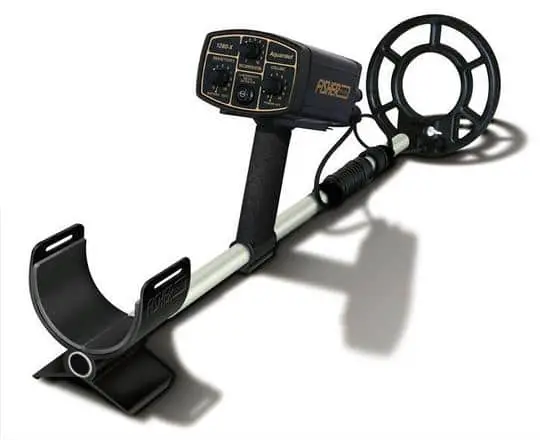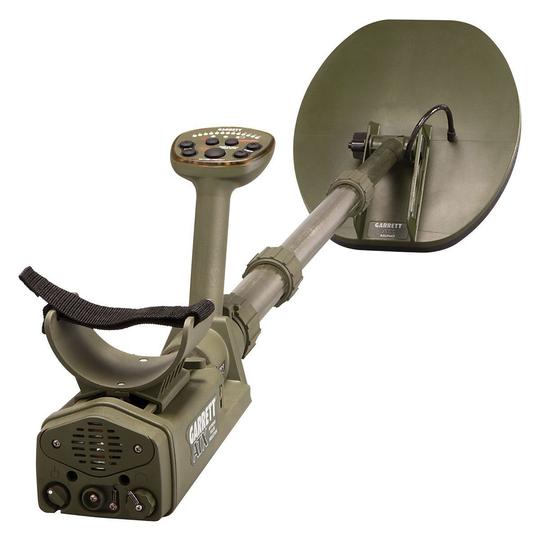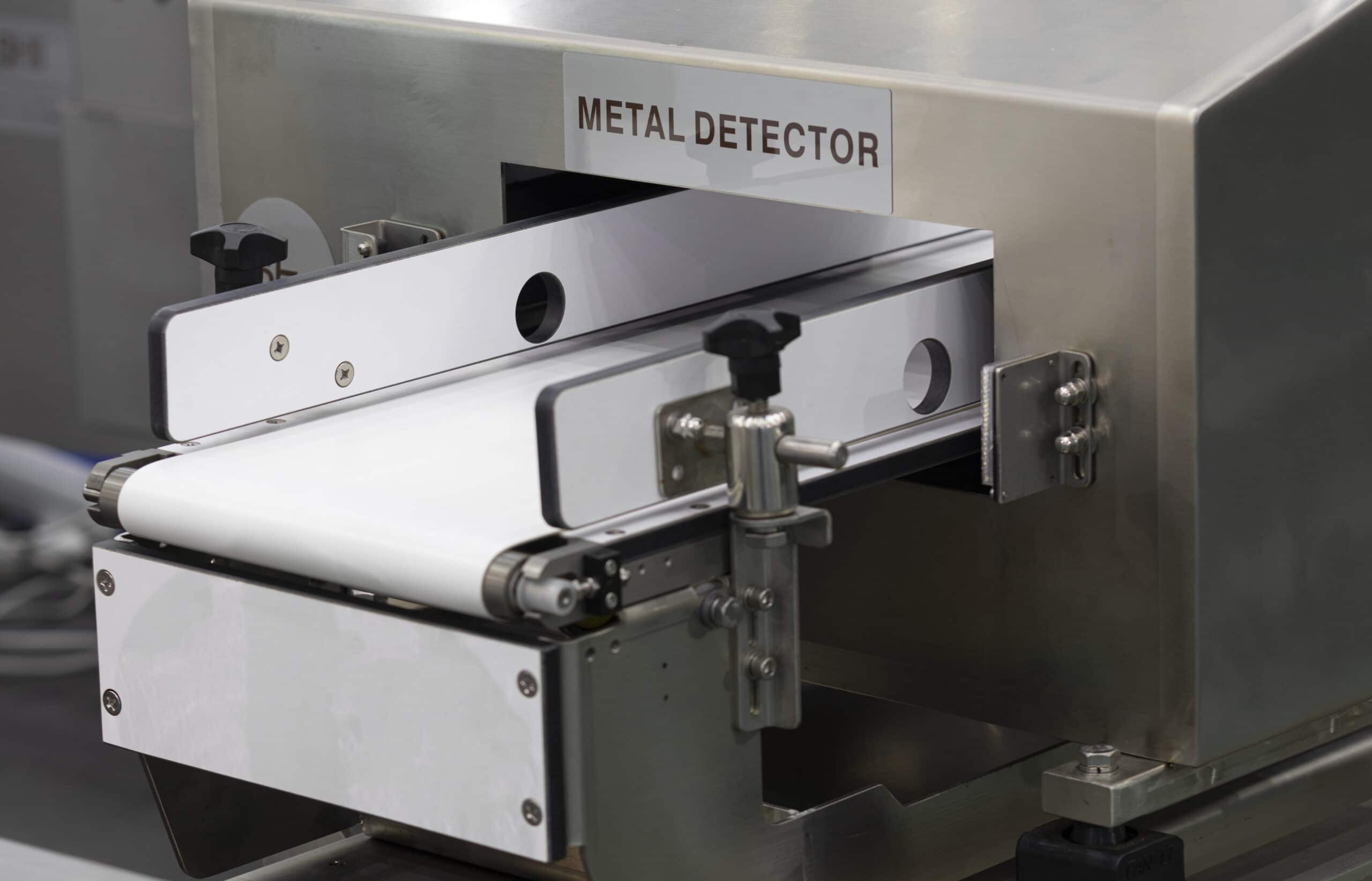Metal detecting can be an exhilarating and fulfilling hobby, but it can also be difficult to get into without the right equipment. People interested in being a metal detectorist might be surprised by the vast number of metal detectors you can buy of varying types, capabilities, and prices. With so many options (and few of them cheap), choosing the metal detector that best suits you and your ambitions can be daunting, but it doesn’t have to be.
There are four types of metal detectors: Very low frequency (VLF), pulse induction (PI), Beat Frequency Oscillation (BFO), and industrial detectors. Each is designed differently, making one type better for finding certain targets over others (ex. VLF for treasure hunting versus a PI for firearms). But other factors will affect which is best for you.
The article below explores all the different available metal detector choices and how to choose based on budget, experience, targets, features, and other factors. By the end, you’ll be able to confidently purchase the metal detector that’s right for you and know it was a worthwhile investment that is guaranteed to help you find what you seek.
Are All Metal Detectors the Same?
A common misconception that new metal detectorists have is that they assume there is only one type of metal detector and the difference between options is simply price and various features. While this might make the decision process easier to only have one type of metal detector, it isn’t the case.
All metal detectors are not the same! In reality, there are four overarching types of metal detectors you can purchase:
- Very low frequency (VLF) detectors
- Pulse induction (PI) detectors
- Beat Frequency Oscillation (BFO) detectors
- Industrial detectors
Out of all these options, the VLF detector is the most popular choice used by the majority of metal detectorists and will most likely be the type you start with. However, there is a time and a place for the other options as well. Therefore, you’ll want to know the differences between each so you can determine which suits the areas you intend to search, the targets you want to find, the depth of those targets, and other factors.
Very Low Frequency (VLF) Detectors

VLF detectors are one of the most widely used types available, especially by beginner or amateur metal detectorists. They are very sensitive at picking up small, deep targets, making them highly accurate and a favored choice for general treasure hunting. If there is one condition that VLFs tend to struggle more than other detectors, such as the PI, it’s in highly mineralized soil.
A VLF metal detector works by producing an electromagnetic field using one transmitting coil that will then be retransmitted by any metals in the ground. If the retransmitted field is strong enough, the receiver coil will collect it and pinpoint the find’s location, and a clear visual will appear on the control box.
Almost any metal detectorist will have at least one VLF metal detector in their arsenal. However, since these are such beginner-friendly tools for this hobby, you’ll usually find them on the cheaper side of the price spectrum compared to other types. Most pros who enjoy their VLF hunting will invest in a pricier, more effective detector, but any new hobbyist could purchase one of these for $50-$100.
Pulse Induction (PI) Detectors

Next to the VLF, a PI is probably the next most commonly used metal detector in the field. Usually, beginner metal detectorists won’t go for this option until they’re more comfortable with their metal detecting capabilities and are certain they enjoy the hobby.
Part of the reason for this is that PIs are much pricier than VLF metal detectors. Even the cheapest PI will still cost any hobbyist $1,000 or so. That being said, what you get with these detector’s capabilities makes the investment well worth it in most metal detectorists’ eyes.
PI detectors work very differently than VLF detectors. Instead of featuring the unique two-coil design you see on VLF detectors, PI detectors have one coil and locate items using echolocation rather than transmitting an electromagnetic field.
Because of this, PI detectors aren’t as efficient at finding metals as VLF detectors. Instead, this tool is more commonly used to find firearms, which is why you’ll typically see them strapped to facility or border guards rather than hobbyists. But, if you enjoy metal detecting for gold, in highly mineralized soil, or near salt water, this is the metal detector for you as its performance generally supersedes VLFs in these areas.
Beat Frequency Oscillation (BFO) Detectors
A less common but still relevant metal detecting option is the BFO. These also feature two separate coils like the VLF, but they function differently.
On a BFO is two differently sized copper coils that are rolled around iron or steel; one large ring is located at the search head of the detector, and the other smaller ring is located higher up in the control box. These two coils are connected via an oscillator that generates a frequency from thousands of pulses of current per second.
This creates a magnetic field that will cause a variation in audible tones created by the BFO control box when disrupted by an object.
Ultimately, BFOs are the simplest type of metal detector to use, which is why they are undoubtedly the cheapest. However, they are also the least accurate option. As a result, most amateurs will spend the extra $50 or so to buy a low-grade VLF that will be more accurate in its cheapest form than to invest in a BFO. If you like to go metal detecting with your kids, maybe get them a BFO to start with, as it will be easy for them to use and won’t cost you as much in the event they don’t stick with the hobby.
Industrial Detectors

The final type of metal detector isn’t something you’re going to see hobbyists walking around with, but it’s good to know what the name entails for future reference.
Industrial metal detectors are the type you’ll see in shopping malls, airports, select schools, and high-security spaces. These are the giant metal doorways you walk through that will detect if you have anything metallic on your person when you pass through.
These detectors use electromagnetism to detect objects, and while they’ll signal for any metallic object, their main purpose is to find undesirable items someone might be carrying, such as weaponry. So, thankfully, this is one type of metal detector you don’t have to worry about comparing with your other options; you just have to make sure you don’t leave your keys in your pockets the next time you encounter one.
How Much Are Metal Detectors?
One of the first questions any beginner metal detectorist will ask when they’re searching for their first metal detector is how much this essential tool will cost them. Unfortunately, there isn’t a clear-cut answer to this question.
How much a metal detectors costs will largely depend on the type you purchase and the device’s overall features. You can purchase a vast number of beginner-friendly VLFs for around $100-$200, or you can buy an advanced PI for around $2,000. Typically, if you’re looking for an average cost of a mid-line metal detector, you’ll be spending around $400-$600.
This usually leads to the question of how you can determine the quality of a metal detector to ensure the amount you’re spending is worthwhile.
How Much Does a Decent Metal Detector Cost?
When starting your metal detecting journey, the last thing you want to do is put your hard-earned money into a pricy metal detector that doesn’t perform up to your standards.
Considering the vast range of metal detecting prices, it can be difficult to find the sweet spot price-wise where you know you’re getting a solid machine but didn’t have to spend excessive amounts for it.
Again, what price is considered “decent” for a metal detector will depend on which one you want. If you want a reliable VLF, we think anything in the $200-$500 range is going to yield agreeable results for the average metal detectorist. If you’re really intrigued by the PI detectors, you’ll have to be comfortable spending a lot more, as a decent one of these will easily cost you $800-$1,000.
How to Choose Which Metal Detector is Right For You

Not that you know the differences between the various types of metal detectors and how much this purchase will likely cost you, let’s talk about how you can dwindle down the overwhelming list of options to choose a metal detector that is right for you.
The factors you’ll want to consider when purchasing a metal detector are:
- Budget
- Features
- Intended target
- Search location
- Experience
- Frequency of use
Having a clear idea of each of these factors will make it substantially easier for you to find the metal detector that will optimally match your ambitions and function without you over or underpaying for it.
Budget
We’ve already spent a decent amount of this article discussing why a budget is important to consider for your metal detector, so we’ll be brief here.
Knowing your budget for your metal detector ahead of time is crucial since these tools come in a wide range of prices, and the quality you get with those prices can vary significantly depending on what type of metal detector you buy. For instance, a $1,000 VLF means it will be mid to high quality for its type, whereas this is on the lower side for a PI, as the higher quality machines will cost closer to $2,000-$3,000.
So, before you get carried away with looking at all of the amazing types of metal detectors the features they have, it’s important to have a firm figure or range in mind that you’re willing to spend so you can curb your expectation.
Features
All metal detectors have the same primary function of detecting items underground, but how they do this and the features that allow them to be effective can also vary from machine to machine.
Some of the most significant features of any metal detecting device include:
- Discrimination
- Ground balance
- Target identification
- Frequency control
- Depth indicator
- Salt-tracking
- Self-adjusting threshold (SAT)
- Voltage-controlled oscillator (VOC)
The combination of these features will allow you to quickly and accurately find treasure, but you’ll find you might want to prioritize some over others depending on what you intend to find and where you’re going to be searching. For instance, if you like to metal detect in or around water sources, especially saltwater, you’ll want a salt-tracking feature in addition to waterproof tools (both of which will affect your budge substantially).
Depth is another feature you’ll want to be conscious of since certain objects have a tendency to be found deeper in the ground than others, so you’ll want a machine that can accurately pinpoint them, like a higher-quality VLF.
Intended Target
You don’t have to limit yourself to searching for one specific metal or object when you’re searching for a metal detector, but it’s good to have a general idea of what you’re purchasing this tool for, so you can buy the one that is best designed to suit your intended target.
There’s a decent number of metal detectorists who spend the majority of their time searching for precious metals like gold, and so, if this resonates with you, you’ll probably want to invest in a decent PI detector that can find this material easier than a VLF.
Knowing your intended target is also important when it comes to prioritizing features in your metal detector, such as how many modes the detector has. Most will have relic, beach, coin & jewelry modes, but if one of these is absent in the metal detector you’re considering and you know it’s your intended target, you might want to find a different detector.
Search Location
This factor goes hand-in-hand with the others we’ve discussed. The location you’re searching in can always pose problems to your metal detector if it isn’t built to handle them efficiently.
If you know the land you intend to search has highly mineralized soil, a PI detector should probably be in your future versus a VLF. However, if you’re searching in a wooded area where you know your target is going to be buried several inches deep, a VLF is the better choice.
Experience
Learning a metal detector’s various controls and settings definitely takes time and practice, so you’ll want to choose the most beginner-friendly models, such as a VLF or even a BFO. PIs are exceptional machines, but they can be tricky for amateur metal detectorists to get the hang of and are usually better suited to hobbyists who have a firm grasp of how these machines work and are ready to upgrade to a more challenging tool.
Frequency of Use
Our final factor you should consider is probably the one people overlook the most. While we understand wanting to spend thousands of dollars on the highest-quality metal detectors, it doesn’t make any sense to do this if you’re only going to use it for one vacation or a couple of times a year.
Conversely, if you’re going to metal detect daily or multiple times a week, you’ll need a detector that can withstand this frequency of use without it affecting its functionality and longevity. So, be honest with yourself about how much you’re going to use this tool before you buy it.
Final Thoughts
Looking at all of the metal detector options can be a daunting sight, but we promise if you use the information here, your search will be infinitely easier, and you’ll find a detector that matches your budget, experience levels, and detecting needs.
When in doubt, VLFs are the best metal detector for most targets, experience levels, and conditions, but if you’re confident in your metal detecting skills and want to expand your tool kit, it never hurts to have a quality PI detector on hand for those gold hunts and searches in mineralized soils.
